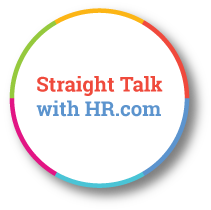“Authenticity, Transparency, And Storytelling: The Cornerstones Of Effective Employer Branding”
Exclusive interview with Antony Michaeline Praveen Maria, Senior Manager, HR, TCS (North America)
Posted on 03-19-2025, Read Time: 6 Min
Share:

 |
“Employer branding is not just an HR function; it’s a business strategy that influences talent acquisition, retention, and overall company reputation. The key is to be intentional, data-driven, and aligned with employees' real experiences to create a brand that attracts and retains the best talent,” said Antony Michaeline Praveen Maria, Senior Manager of Human Resources at Tata Consultancy Services (North America). |
In this exclusive interview with HR.com's HR Excellence Magazines, Antony Michaeline, shares insights into the evolving world of employer branding. Drawing from his extensive experience in talent acquisition and HR strategy, Antony discusses the challenges companies face, common pitfalls in branding efforts, and the best practices for building a brand that resonates with today’s workforce.

Excerpts from the interview:
Q: What are the biggest challenges companies face when trying to establish a strong employer brand?
Antony Michaeline: One of the biggest challenges? Trying to be everything to everyone. Today’s workforce is incredibly diverse—Millennials and Gen Z prioritize flexibility, purpose-driven work, and growth, while Gen X and Boomers often value stability, benefits, and leadership opportunities. A one-size-fits-all approach doesn’t work. Companies have to strike a balance—offering personalized experiences while maintaining a unified employer brand.Another challenge is authenticity. In a world where job seekers can easily look up employee reviews, watch workplace TikToks, and compare company cultures on LinkedIn, branding efforts that feel staged or disconnected from reality won’t work. If a company claims to be “people-first” but has high turnover and poor Glassdoor ratings, candidates will notice.
And let’s not forget global competition. With remote work, companies are no longer just competing with their local job market. Employees can now work for companies halfway across the world, meaning organizations must work even harder to stand out.
Q: What are the common mistakes organizations make when attempting employer branding?
Antony Michaeline: One big mistake? Treating employer branding like a marketing stunt rather than a cultural commitment. It’s not just about flashy career pages, polished recruitment videos, or catchy slogans—it’s about how employees actually feel at work. If there’s a disconnect between what a company says and what employees experience, it can backfire. Candidates talk, and word spreads fast.Another common pitfall is ignoring the employee voice. Employees are the best brand ambassadors, yet some companies don’t actively involve them in storytelling. A well-crafted corporate message won’t be as impactful as an employee’s genuine LinkedIn post about how their company supported them through a tough time.
Then there’s not measuring impact. Companies pour resources into employer branding but don’t track if it’s actually working. If engagement, retention, and candidate interest aren’t improving, something’s off.
Q: What are the best employer branding efforts you’ve seen in recent times? Why?
Antony Michaeline: Some of the most impactful employer branding strategies right now center around authenticity, transparency, and storytelling.For example, companies that share real career journeys—like how an entry-level hire grew into a leadership role—make a lasting impression. It’s one thing to say “we invest in talent,” and another to show it through real employee stories.
Purpose-driven branding is also gaining traction. Employees and candidates want to work for organizations that stand for something bigger than just profit. Companies that highlight their social impact—whether it’s sustainability efforts, DEI initiatives, or giving back to communities—are attracting talent who align with those values.
And then there’s the power of video and social media. Job seekers love behind-the-scenes content—whether it’s a day-in-the-life video of an employee, candid workplace moments, or leaders engaging in real talk about company culture. The companies that get this right don’t over-polish things; they keep it real.
Q: What metrics do you consider the most important in evaluating in employer brand’s success?
Antony Michaeline: Measuring employer brand success requires a mix of qualitative and quantitative metrics. Some of the most critical indicators include:- Employee Net Promoter Score (eNPS): Measures how likely employees are to recommend their company as a great place to work.
- Retention and Turnover Rates: A strong employer brand should contribute to higher employee retention.
- Offer Acceptance Rates: A positive employer brand should result in higher offer acceptance rates from top candidates.
- Time to Fill and Quality of Hire: If branding efforts are effective, hiring should become more efficient with better candidate quality.
- Candidate Experience Scores: Surveys capturing how candidates perceive the recruitment process provide insights into employer branding effectiveness.
- Social Media Engagement & Reviews: Employer brand strength can also be assessed through LinkedIn engagement, Glassdoor ratings, and employee-generated content participation.
Q: Can you share your top best practices for achieving success in employer branding efforts?
Antony Michaeline:- Be Authentic: Employer branding should reflect the real employee experience. Involve employees in storytelling and showcase authentic voices rather than scripted marketing.
- Engage Leadership: Strong employer brands are often championed from the top. Leaders who actively participate in employer branding—sharing insights, career journeys, and cultural values—help build credibility.
- Leverage Employee Advocacy: Encourage employees to share their experiences on platforms like LinkedIn or through internal ambassador programs. Candidates trust employee voices more than corporate messaging.
- Personalize Communication: Use data and AI to tailor job recommendations, employer brand messaging, and candidate engagement strategies.
- Measure & Iterate: Continuously track employer brand perception through surveys, hiring metrics, and social listening tools. Adjust strategies based on data-driven insights.
- Invest in Employee Experience: Employer branding isn’t just about attracting talent—it’s about retaining them. Providing career development, well-being initiatives, and inclusive policies strengthens brand perception.
"Disclaimer: The views expressed in this document are solely my personal opinions and do not represent the views, policies, or strategies of any current or past organization I am associated with. These insights are based on my individual experience and perspectives in the field of employer branding.
Error: No such template "/CustomCode/topleader/category"!

